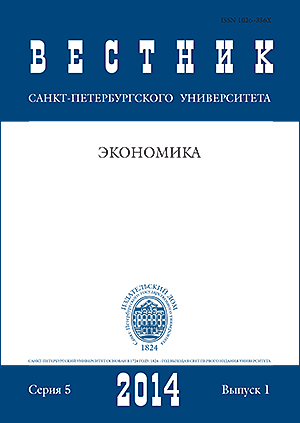Application of the Dynamic Input — Output Economic Growth Model for the Analysis of Russian Economy
Abstract
The article analyzes the dynamics of Russian economy in 2005–2011. The authors consider the main indicators and peculiarities for that period in the conditions of global economic and financial crisis. The authors give special attention to monopolized resource Russian economy and to some social and economic consequences associated with such economy. In this connection, the authors mark the necessity to use special dynamic economic growth models to regulate the economy. They offer two economicmathematical models. The first model is dynamic long run economic growth model. The second model is von Neumann type of short run economic growth model. The main sense of this model is connected with the equilibrium prices and balanced growth process. The proposed model was used for the investigation of dependence of balanced economic growth rate and prices structure on the income distribution, system of production and GDP structure. The main results of simulation experiments based on official statistics are presented and analyzed. Refs 26. Figs 3. Tables 7.
Keywords:
balanced growth, equilibrium prices, mathematical modeling, von Neiman models
Downloads
References
References in Latin Alphabet
Translation of references in Russian into English
Downloads
Published
How to Cite
Issue
Section
License
Articles of the St Petersburg University Journal of Economic Studies are open access distributed under the terms of the License Agreement with Saint Petersburg State University, which permits to the authors unrestricted distribution and self-archiving free of charge.






